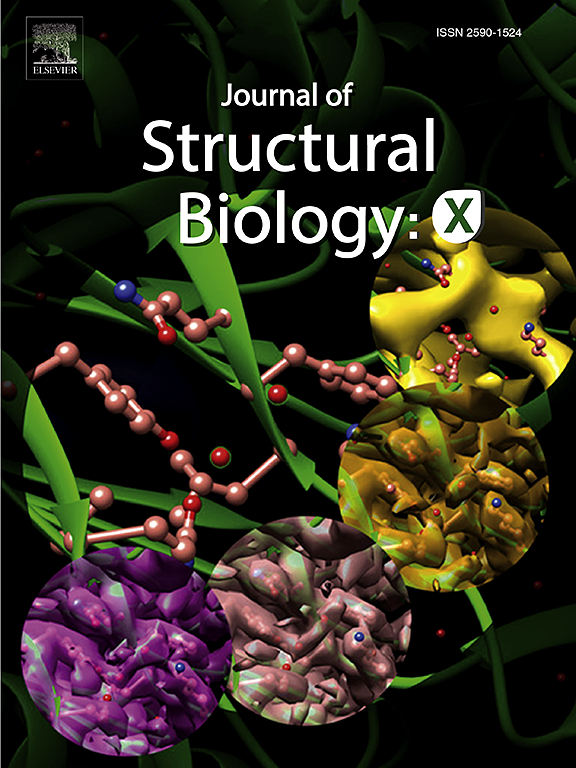Ensemble-function relationships: From qualitative to quantitative relationships between protein structure and function
IF 2.7
3区 生物学
Q3 BIOCHEMISTRY & MOLECULAR BIOLOGY
引用次数: 0
Abstract
Structure-function relationships are deeply rooted in modern biochemistry and structural biology and have provided the basis for our understanding of how protein structure defines function. While structure–function relationships continue to provide invaluable qualitative information, they cannot, in principle, provide the quantitative information ultimately needed to fully understand how proteins function and to make quantitative predictions about changes in activity from changes in sequence and structure. These limitations appear to arise from fundamental principles of physics, which dictate that proteins exist as interchanging ensembles of conformations, rather than as static structures that underly conventional structure–function relationships. This perspective discusses the concept of ensemble-function relationships as quantitative relationships that build on and extend traditional structure–function relationships. The concepts of free energy landscapes and conformational ensembles and their application to proteins are reviewed. The perspective summarizes a range of approaches that can provide conformational ensemble information and focuses on X-ray crystallography methods for obtaining experimental protein conformational ensembles. Focusing on enzymes as archetypes of protein function, recent literature examples are reviewed that used ensemble-function relationships to understand how protein residues contribute to function and how changes in protein sequence and structure impact activity, leading to new models and providing previously inaccessible mechanistic insights. Potential applications of conformational ensembles and ensemble-function relationships to protein design are examined. The perspective concludes with current limitations of the ensemble-function relationships and potential paths forward toward the next generation of quantitative ensemble-function models.

集合-功能关系:蛋白质结构与功能之间从定性到定量的关系。
结构-功能关系在现代生物化学和结构生物学中根深蒂固,是我们理解蛋白质结构如何定义功能的基础。虽然结构-功能关系继续提供了宝贵的定性信息,但原则上,它们无法提供最终所需的定量信息,以全面了解蛋白质的功能,并对序列和结构的变化引起的活性变化进行定量预测。这些局限性似乎源于物理学的基本原理,即蛋白质是作为不断变化的构象组合而存在的,而不是作为支撑传统结构-功能关系的静态结构。本研究从这一角度探讨了组合-功能关系的概念,将其视为建立在传统结构-功能关系基础上并加以扩展的定量关系。本文回顾了自由能谱和构象组合的概念及其在蛋白质中的应用。该视角总结了一系列可提供构象组合信息的方法,并重点介绍了获取实验性蛋白质构象组合的 X 射线晶体学方法。文章以作为蛋白质功能原型的酶为重点,回顾了最近的文献实例,这些实例利用构象组合-功能关系了解蛋白质残基如何对功能做出贡献,以及蛋白质序列和结构的变化如何影响活性,从而建立新的模型,并提供以前无法获得的机理见解。研究还探讨了构象组合和集合功能关系在蛋白质设计中的潜在应用。该视角最后介绍了目前集合功能关系的局限性以及下一代定量集合功能模型的潜在发展道路。
本文章由计算机程序翻译,如有差异,请以英文原文为准。
求助全文
约1分钟内获得全文
求助全文
来源期刊

Journal of structural biology
生物-生化与分子生物学
CiteScore
6.30
自引率
3.30%
发文量
88
审稿时长
65 days
期刊介绍:
Journal of Structural Biology (JSB) has an open access mirror journal, the Journal of Structural Biology: X (JSBX), sharing the same aims and scope, editorial team, submission system and rigorous peer review. Since both journals share the same editorial system, you may submit your manuscript via either journal homepage. You will be prompted during submission (and revision) to choose in which to publish your article. The editors and reviewers are not aware of the choice you made until the article has been published online. JSB and JSBX publish papers dealing with the structural analysis of living material at every level of organization by all methods that lead to an understanding of biological function in terms of molecular and supermolecular structure.
Techniques covered include:
• Light microscopy including confocal microscopy
• All types of electron microscopy
• X-ray diffraction
• Nuclear magnetic resonance
• Scanning force microscopy, scanning probe microscopy, and tunneling microscopy
• Digital image processing
• Computational insights into structure
 求助内容:
求助内容: 应助结果提醒方式:
应助结果提醒方式:


